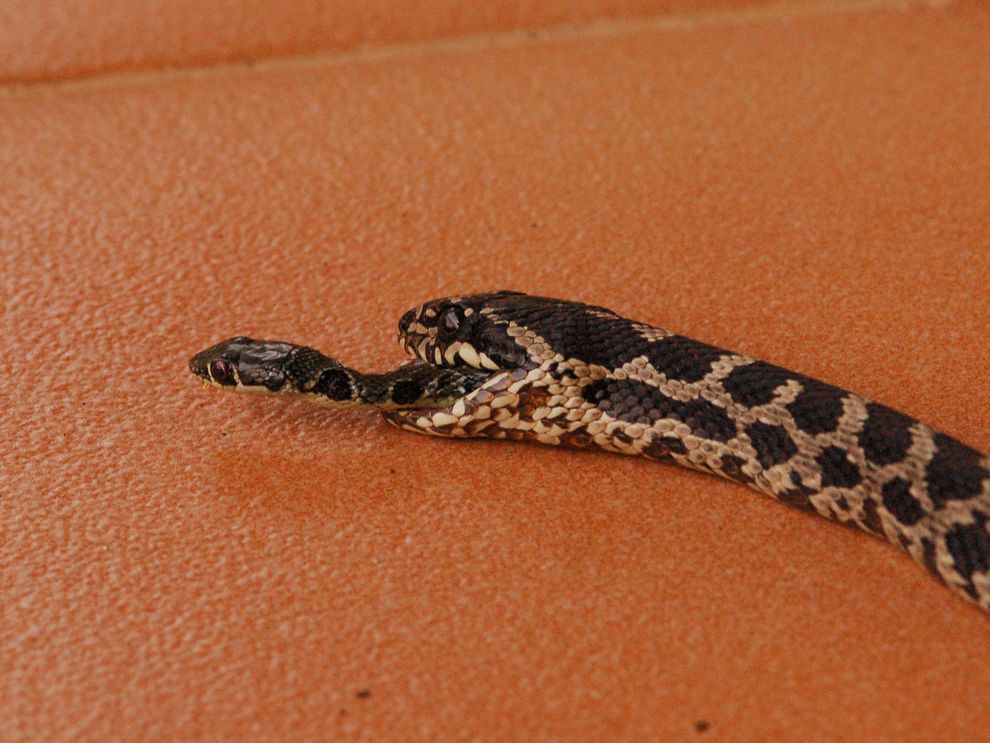A snake remarkably escaped from a larger snake that swallowed it whole on the Greek island of Corfu, according to recently published photographs.
In 2011, the wild reptile, a Dahl's whip snake (Platyceps najadum), wriggled its way to freedom after being eaten by a four-lined snake (Elaphe quatuorlineata), which was in turn killed by a pet cat. (The four-lined snake, a type of large rat snake, is common in Greece.)
The cat's owner, Dutch national Dick Mulder, caught the event on camera at his Corfu home after he retrieved the dead snake from his garden.
"My wife, who didn't like the idea of a dead snake on her veranda, screeched that the snake wasn't dead—she saw it moving," he said in an email. "I reassured her that it was really dead," Mulder recalled—until he took a closer look.
"I went to grab my camera, and by the time I came back I saw the head of a small snake," he said. (Get National Geographic's tips on photographing wildlife.)
The whip snake eventually struggled free and slithered back to the wild, apparently unharmed.
"As far as I know it avoided its savior, Demon the Cat," Mulder quipped.
Slippery Business
Andrew Gray, curator of herpetology at Manchester Museum in the U.K., first reported the bizarre incident in January on his blog.
Gray, an expert on the snakes of Corfu, said the smaller snake's escape was rare. He knows of only one other example of a snake getting away after becoming another's last meal—in that case, the reptile wriggled from the wound of a snake that was shot by hunters.
It's also unusual in that the whip snake managed to exit from the dead snake's mouth, given snakes generally swallow their prey head first. (See "Giant Python Meals That Went Bust.")
It's easier for snakes to start with their prey's head, "particularly rodents that have legs that can get in the way," Gray said.
That said, "this was a small snake, so it was probably eaten any which way," he added.
And if the whip snake did need to perform a U-turn inside its predator's belly in order to escape, Gray reckons it would have been "small enough and agile enough to perform that trick."
How'd It Survive?
Agile or not, how could a snake survive inside another? The only answer is that the bigger snake had just eaten its prey before the cat intervened, Gray added. (See "5 of Nature's Wildest Animal Showdowns.")
Otherwise, he said, the effects of the larger snake's digestive fluids would have been fatal to the smaller snake—a likelier cause of death than either suffocation or crushing through constriction, given the prey snake's slender build.
The eaten snake was also fortunate to be preyed on by a four-lined snake—it's the largest snake native to Europe without a venomous bite.
Overall, then, this is one very lucky snake—all thanks to a cat. As the animal with nine lives, perhaps it could afford to share one.
(nationalgeographic.com)
ANN.Az
Follow us !











